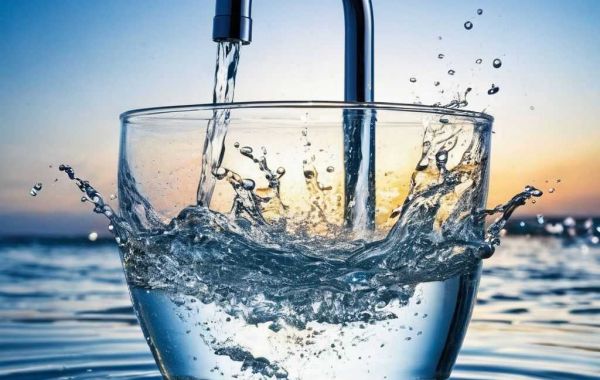The Importance of Water Purification
Water contamination is a serious global issue. Inadequately treated water can carry pathogens like bacteria and viruses, as well as harmful chemicals such as pesticides, chlorine, and heavy metals like lead or arsenic. Consuming or coming into contact with contaminated water can lead to illnesses, from mild gastrointestinal issues to more severe conditions like cholera, dysentery, and long-term poisoning from heavy metals.
Water purification ensures that the water we drink and use is free from these dangerous contaminants. Whether you’re using municipal tap water, well water, or water from a natural source, purifying it can help remove harmful substances and improve the taste, odor, and clarity of the water.
Different Water Purification Methods
There are several methods available for purifying water, each with specific advantages and limitations. Depending on the source of the water and the contaminants present, some methods may be more effective than others. Below is an overview of the most common water purification systems:
1. Filtration Systems
Filtration is one of the most common and accessible methods of water purification. Filters work by physically removing contaminants from water, ranging from large particles to microorganisms and chemicals.
Activated Carbon Filters: These are widely used in both household and industrial water purification systems. Activated carbon adsorbs contaminants such as chlorine, volatile organic compounds (VOCs), pesticides, and unpleasant odors or tastes. It’s ideal for improving the taste of tap water and removing chemicals commonly found in municipal water supplies.
Sediment Filters: These filters are designed to remove large particles like dirt, sand, and rust. While they don’t remove smaller contaminants like bacteria or chemicals, they help prevent clogging in other more advanced filters, ensuring they work efficiently.
Reverse Osmosis (RO): Reverse osmosis is a highly effective filtration method that uses a semi-permeable membrane to remove up to 99% of dissolved contaminants, including heavy metals, salts, pesticides, and microorganisms. This makes RO systems excellent for purifying water from wells or surface sources that may have high contamination levels. However, RO systems can waste a significant amount of water during filtration and tend to be slower and more expensive compared to other options.
Ion Exchange Filters: These filters are used to remove minerals that contribute to hard water, such as calcium and magnesium. They also help remove heavy metals like lead and copper, making water softer and better for household use.
2. Boiling
Boiling is one of the simplest and oldest methods of disinfecting water. By heating water to its boiling point (100°C or 212°F), most bacteria, viruses, and parasites are killed. This method is particularly useful in emergency situations or when traveling to areas where water quality is uncertain.
While boiling effectively kills pathogens, it does not remove chemical contaminants such as heavy metals, pesticides, or chlorine. Additionally, boiling water uses a lot of energy, and it can be impractical if large amounts of water need to be purified.
3. Ultraviolet (UV) Disinfection
Ultraviolet (UV) disinfection systems use UV light to kill or inactivate microorganisms like bacteria, viruses, and protozoa. The UV light disrupts the DNA or RNA of these pathogens, preventing them from reproducing and causing illness. UV purification is a fast, effective, and chemical-free way to disinfect water, making it ideal for households with a biological contamination concern.
However, UV systems only address biological contaminants. They do not remove sediments, chemicals, or heavy metals, which is why UV purifiers are often used in combination with other filtration methods like activated carbon or reverse osmosis.
4. Distillation
Distillation involves boiling water to produce steam, which is then condensed back into liquid water. Since most contaminants, such as salts, heavy metals, and microorganisms, do not vaporize at the same temperature as water, they are left behind during the boiling process. The steam is then collected and condensed, providing purified water.
Distillation is effective at removing a wide range of contaminants, including bacteria, heavy metals, and salts. However, it can be slow and energy-intensive. Additionally, distillation does not remove volatile chemicals that vaporize at similar temperatures to water, such as certain pesticides or solvents.
5. Chemical Disinfection
Chemical disinfection involves adding chemicals like chlorine, iodine, or ozone to water to kill harmful microorganisms. Chlorine is commonly used in municipal water treatment plants and is highly effective at killing bacteria and viruses. It’s also used in home water purification systems, particularly for disinfecting water in emergency situations or for outdoor use.
While chemical disinfection is effective in killing pathogens, it doesn’t address chemical contaminants such as heavy metals, pesticides, or other toxins. Additionally, chlorine can leave an unpleasant taste in the water, and iodine is not recommended for long-term use due to potential health risks.
Choosing the Right Water Purification System
The best water purification system for your needs depends on several factors, including your water source, the types of contaminants present, and your budget. Here are some considerations to help you make an informed decision:
Water Source: If you get your water from a municipal supply, it’s typically treated to meet safety standards, but it may still contain residual chlorine, chloramine, or fluoride. For well water or water from natural sources like rivers or lakes, more advanced filtration may be necessary to remove bacteria, parasites, and chemicals.
Contaminants: The types of contaminants you need to remove will help determine the best system. For biological contaminants like bacteria and viruses, UV disinfection or chemical treatments are effective. For chemical contaminants such as chlorine, heavy metals, or pesticides, reverse osmosis or activated carbon filtration are ideal.
System Capacity: Consider how much purified water you need. A small countertop filter or pitcher may be sufficient for personal use, while a whole-house filtration system may be necessary if you need to purify large amounts of water.
Maintenance: All water purification systems require some level of maintenance. Filters need to be replaced periodically, and some systems, such as reverse osmosis or UV systems, require additional upkeep. Factor in maintenance costs when choosing a system.
Cost: There are a wide range of systems available at different price points. Simple filters like activated carbon can be affordable, while reverse osmosis or whole-house systems can be more expensive. Be sure to consider both the initial cost and long-term maintenance costs when choosing a system.
Sustainability and Environmental Considerations
In addition to choosing the right purification method, it’s important to consider the environmental impact of the system. Some systems, like reverse osmosis, waste a significant amount of water during filtration, while others, like chemical disinfection, may involve harmful by-products. To reduce your environmental footprint, look for systems that minimize water waste and use sustainable materials.
Conclusion
Water purification systems are vital for ensuring the water we drink and use every day is free from harmful contaminants. Whether you're concerned about bacteria, heavy metals, or pesticides, there’s a purification method that fits your needs. From simple activated carbon filters to advanced reverse osmosis and UV disinfection systems, there are solutions available for virtually any water source or contamination concern.
Choosing the right water purification system depends on understanding your water quality, the contaminants present, and your lifestyle. By selecting the best purification method for your home or business, you can ensure that the water you drink is safe, clean, and healthy—helping protect your well-being and the environment. Clean water is a fundamental part of a healthy life, and with the right purification system, you can have peace of mind knowing that the water you use is safe and pure.








